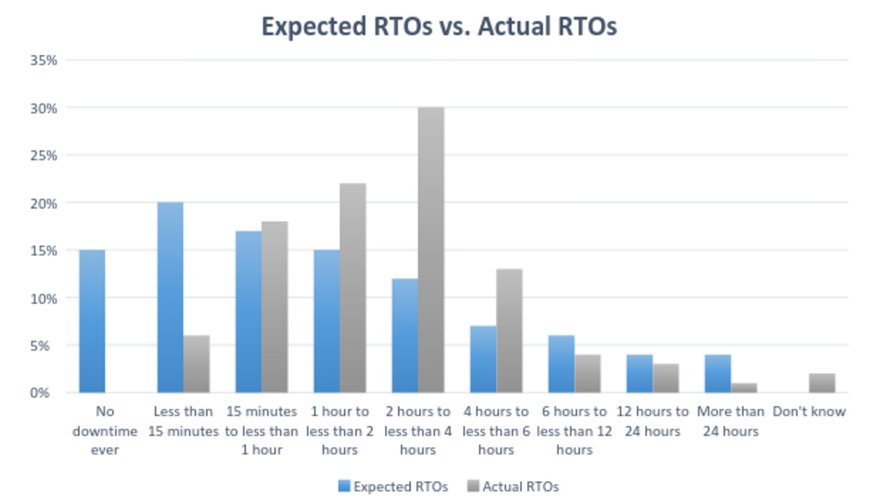It’s no secret that IT downtime can be crippling to a business, impacting both a company’s finances and reputation in potentially disastrous ways. In recent months, there have been a number of high-profile examples of the true cost of downtime, affecting hospitals, banks, major airlines, and government agencies. Even Pokémon Go hasn’t been immune to prolonged instances of IT downtime.
The impacts add up
So what is the true cost of downtime? If we use the example of an airline, we can break down the factors of what would impact a company’s finances. When the outage first started, the airline would have to delay flights. To combat a public relations nightmare, it would then have to reimburse affected passengers, and would likely offer them airline miles or a similar consolation gift for any inconvenience.
As with any business, but especially with consumer-facing companies, the longer an outage lasts the more revenue will be lost, as an airline wouldn’t be able to board or process passengers or sell tickets at the same rate as it would be able to if systems were online.
With consumer-facing companies, the longer an outage lasts the more revenue will be lost
There is also the matter of paying extra staff to help out in the case of downtime as many automated features would have to be done by hand. And the airline would have to pay any other staff overtime as well, since everyone would be needed to pick up the slack of the downed IT systems. In addition to all of these immediate costs, the company could feel the repercussions for years as its brad reputation might be impacted.
What caused it?
IT downtime can be caused by a variety of factors including natural disasters, user error, and malicious attacks from outside sources, among other things. Whatever the cause of downtime, the key to saving face with the public and saving money is quickly recovering to get operations back up and running in a timely manner. In its January 2016 Cost of Data Center Outages report, Ponemon Institute found that the average cost of IT downtime is about $9000 per minute. In certain, more public cases, like Amazon’s IT outage in 2013, the cost can be much, much higher.
There are backup and disaster recovery options available for companies and budgets of all types. The keys to limiting the true cost of IT downtime can be broken down into three steps.
- Define recovery time objectives and recovery point objectives
Recovery time objectives (RTOs) are a measurement of the amount of time a company can be offline, and recovery point objectives (RPOs) are a measurement of the amount of data a company can afford to lose as a result of downtime. Establishing realistic RPOs and RTOs will help an organization define its disaster recovery solution needs. - Find a solution that meets the needs of the organization
Once the needs of the organization are established, it’s then time to find a solution that can meet the desired recovery objectives. More than simply the RTOs and RPOs, the capabilities and constraints of the IT staff should be considered when choosing a disaster recovery solution. IT leaders should look to solutions that are simple and that require minimal training to lessen the likelihood of user error due to complexity. - Ensure that the chosen solution lives up to its promises
This seems like it should be straightforward, but too often disaster recovery solutions don’t deliver. In fact, leading analyst firm Enterprise Strategy Group (ESG) compared the customer expectations of disaster recovery solutions in terms of meeting the required RTOs with the actual amount of time the solutions took to recover. ESG found in its February 2016 report that while 35 percent of respondents were anticipating recoveries in under 15 minutes, only 6 percent actually achieved such quick recovery times (see chart below). One popular fix to combat long or misleading recovery times is to invest in solutions that take advantage of disaster recovery automation where the backup and recovery operations are pre-defined.
Challenges to reputation and public perception due to IT downtime can stunt a company’s growth and market standing for indefinite periods of time. And the actual financial cost can make it even harder for a company to recover its status. To combat IT downtime, companies should establish their organizational needs, invest in solutions that will get IT back up and running within the desired window of time without losing more data than necessary, and validate that the chosen disaster recovery solution actually lives up to its claims.
Jesse St. Laurent is vice president of product strategy at SimpliVity.



